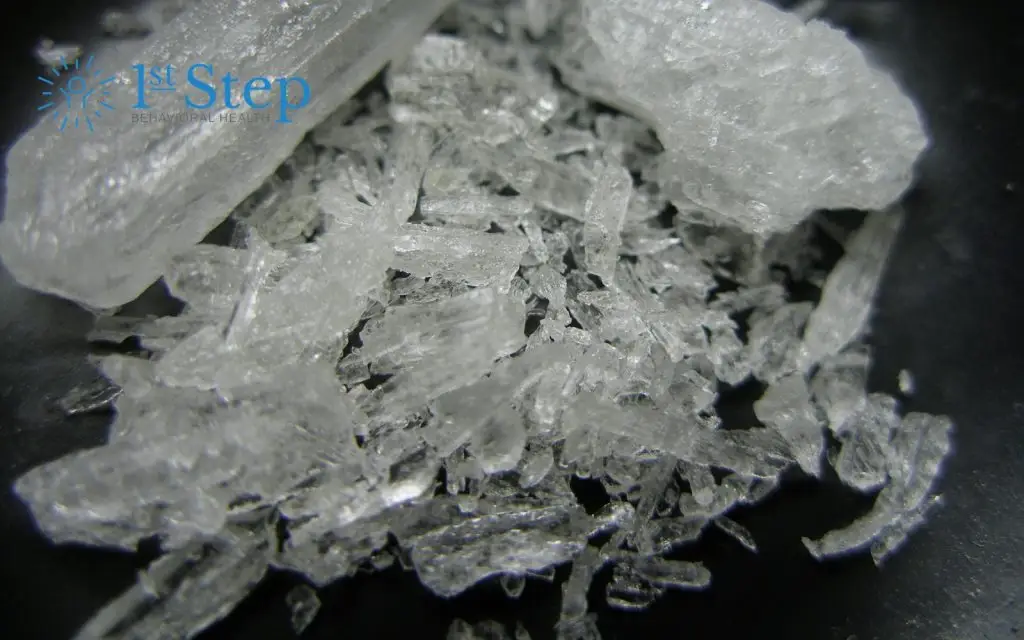In the complex landscape of substance use, a slang term quietly infiltrates both social circles and search bars: Tina. But what is the Tina drug, and why does it carry such devastating consequences?
Tina is street slang for crystal methamphetamine, a highly addictive stimulant that has carved out an especially insidious role in certain communities—most notably among bisexual and gay men within the LGBTQ population. Its euphoric high and potent physiological effects have led to increased chronic use, compulsive behavior, and long-lasting health damage.
This article aims to demystify the drug called Tina, explore its physical and psychological toll, and guide readers toward seeking treatment and recovery.
What Is Tina?
Tina is another name for methamphetamine, a synthetic stimulant that affects the central nervous system. When in its crystallized form, it’s referred to as crystal meth. This form is typically smoked, although it can also be snorted, injected, or ingested.
Tina’s popularity stems from its intense euphoric effects: increased energy, heightened focus, rapid speech, and enhanced sex drive. But the pleasure is short-lived. The repeated use of Tina quickly leads to psychological dependence, substance use disorder, and a cascade of health problems—some irreversible.
Why Is It Called “Tina”?
The slang term Tina emerged as part of a cultural adoption within the LGBTQ community, often tied to the underground party scene and unsafe sex practices. It allowed users to discuss meth discreetly, especially online, without alerting outsiders or moderators.
But beneath this coded language lies a stark reality: Tina is no party drug. It’s a dangerous substance with destructive consequences.
How Tina Affects the Body and Mind
Tina has both immediate and long-term effects, wreaking havoc on a user’s mental health, cardiovascular system, and appearance. Here’s how.
Short-Term Effects:
- Increased alertness and focus
- Elevated body temperature
- Decreased appetite
- Rapid heart rate and increased blood pressure
- Excessive movement or twitching
- Euphoria and overconfidence
- Impaired judgment and unsafe sex
Long-Term Health Risks:
- Severe dental issues like meth mouth and tooth decay
- Gum disease and skin sores
- Weight loss and malnutrition
- Memory loss and difficulty concentrating
- Cardiac arrest, heart attack, or even death
- Increased risk of hepatitis B and HIV
- Mental health issues including paranoia, depression, and anxiety
According to the National Institute on Drug Abuse, chronic methamphetamine use alters the brain’s dopamine system, which plays a key role in motivation, pleasure, and decision-making. These changes can persist long after someone stops using the drug.
Who Is at Risk
Anyone can develop an addiction to Tina. However, its use is especially prevalent among men who have sex with men, often intertwined with sexually charged environments and experiences of community identity and trauma. Tina is also misused by individuals with attention deficit hyperactivity disorder (ADHD) due to its stimulating effects.
The Substance Abuse and Mental Health Services Administration (SAMHSA) reports that marginalized populations are disproportionately affected by meth use due to barriers in mental health services, housing, and social support.
The Nature of Tina Addiction
Methamphetamine is highly addictive because of its fast-acting, powerful high. However, this high is typically followed by a “crash”—a period marked by fatigue, irritability, and strong cravings. Over time, this cycle leads to physical and psychological dependence.
Withdrawal symptoms from Tina can include:
- Severe depression
- Sleep disturbances
- Intense cravings
- Anxiety and paranoia
- Lack of motivation
- Suicidal ideation
These symptoms make it difficult for users to quit without professional help and structured treatment.
Treatment for Tina Addiction
Recovery from Tina addiction is possible, but it requires comprehensive, individualized care. Here is an overview of some of the treatments used.
Detox and Medical Stabilization
Managing intense withdrawal symptoms is the first step. This often requires medical oversight to stabilize blood pressure, regulate body temperature, and address other immediate health concerns.
Behavioral Therapies
The most effective approach to treating methamphetamine addiction is behavioral therapy. Evidence-based methods include:
- Contingency Management: Provides tangible rewards for positive behaviors like abstinence.
- Cognitive Behavioral Therapy (CBT): Helps change the negative thinking patterns that fuel addiction.
- Motivational Enhancement Therapy (MET): Focuses on increasing a patient’s internal motivation for change.
- Family Therapy: Addresses relational patterns and strengthens support systems.
- Group Therapy: Facilitates empathy and accountability among group members.
- Art Therapy: Offers creative outlets for processing trauma and building self-esteem.
Supportive Care and Aftercare
Recovery doesn’t end after rehab. Ongoing recovery includes support groups, mental health services, and relapse prevention strategies. Many people benefit from joining groups like Crystal Meth Anonymous or LGBTQ-focused recovery networks that understand the unique cultural context of meth use.
Why People Use Tina—and How They Can Stop
Many users turn to Tina to escape trauma, cope with rejection, or seek intimacy in environments where vulnerability feels unsafe. Others are drawn in by the promise of increased energy, sexual confidence, or a sense of belonging.
But the cost is too high.
Professional help can break this cycle. Seeking treatment doesn’t mean weakness—it signals courage, self-awareness, and the first step toward a full recovery.
Current Statistics on Methamphetamine Use
According to the 2023 National Survey on Drug Use and Health, around 2.5 million people aged 12 or older used methamphetamine in the past year. Emergency department visits involving meth more than doubled between 2010 and 2020, according to the Drug Enforcement Administration (DEA).
Additionally, over 16,000 overdose deaths in 2021 involved psychostimulants like meth, per data from the Centers for Disease Control and Prevention (CDC). Among specific populations, meth use has increased by nearly 20% over the past five years, especially in urban areas.
These numbers highlight the urgency for mental health services, community outreach, and access to treatment centers equipped to manage the complexities of Tina addiction.
Final Thoughts: From Surviving to Thriving
Tina may wear a friendly name, but it is not a harmless companion. It manipulates the brain, damages the body, and shatters relationships. But recovery is possible—and increasingly, more accessible than ever.
For those struggling, or watching a loved one suffer, the first step is to understand: this isn’t about willpower. It’s about science, support, and solutions.
Whether through family therapy, community support, or evidence-based treatment, there is a path forward. And on that path lies not just survival—but transformation.
If you or someone you love struggles with substance abuse or addiction, you do not have to face it alone. Find treatment, support, and recovery resources at First Step Behavioral Health. Contact our treatment specialists to learn about our programs or to schedule an initial assessment.
Frequently Asked Questions (FAQ)
1. How long does Tina stay in your system?
Crystal methamphetamine (Tina) typically remains in the body for 2–4 days, though this varies depending on factors like frequency of use, metabolism, and overall health. Drug tests can detect meth in urine for up to a week after use. In heavy, chronic users, it may be detectable for even longer.
2. Can someone overdose on Tina?
Yes. Tina (methamphetamine) overdose is a medical emergency and can be fatal. Symptoms include high body temperature, irregular heartbeat, chest pain, seizures, and unconsciousness. Overdose can lead to cardiac arrest, stroke, or organ failure. Immediate medical attention is critical.
3. Are there medications available to treat Tina addiction?
Currently, there are no FDA-approved medications specifically for methamphetamine addiction. However, medications may be prescribed to manage co-occurring conditions like depression, anxiety, or ADHD, and some are used off-label to support recovery. Most treatment relies on behavioral therapies.
4. What’s the connection between Tina and unsafe sex?
Tina increases libido, lowers inhibitions, and impairs judgment, which often leads to unsafe sexual behaviors, especially in high-risk environments like sex parties or online hookup culture. This is a key reason Tina is associated with higher rates of HIV and other STIs, particularly among men who have sex with men (MSM).
5. How can I support a loved one addicted to Tina?
Avoid confrontation or judgment. Encourage them to seek professional help, offer emotional support, and educate yourself on addiction. Resources like family therapy or support groups (e.g., Al-Anon, Nar-Anon) can help you navigate your role in their recovery without sacrificing your own well-being.
6. What’s the difference between Tina and other stimulants like cocaine or Adderall?
While all are stimulants, Tina is chemically longer-acting and more potent than cocaine or prescription stimulants like Adderall. It stays in the system longer, produces more intense euphoria, and has a higher risk of addiction and long-term brain damage.
Cited Sources
- National Institute on Drug Abuse (NIDA): Methamphetamine DrugFacts
- Substance Abuse and Mental Health Services Administration (SAMHSA): 2023 National Survey on Drug Use and Health (NSDUH)
- Centers for Disease Control and Prevention (CDC): Drug Overdose Deaths Involving Psychostimulants
- Drug Enforcement Administration (DEA): National Drug Threat Assessment 2020–2024
- Journal of Substance Abuse Treatment: Rawson, R. A. (2021). “Treatment of Methamphetamine Use Disorder: Current Research and Future Directions.”
Jump to a Section
Call (855) 425-4846
